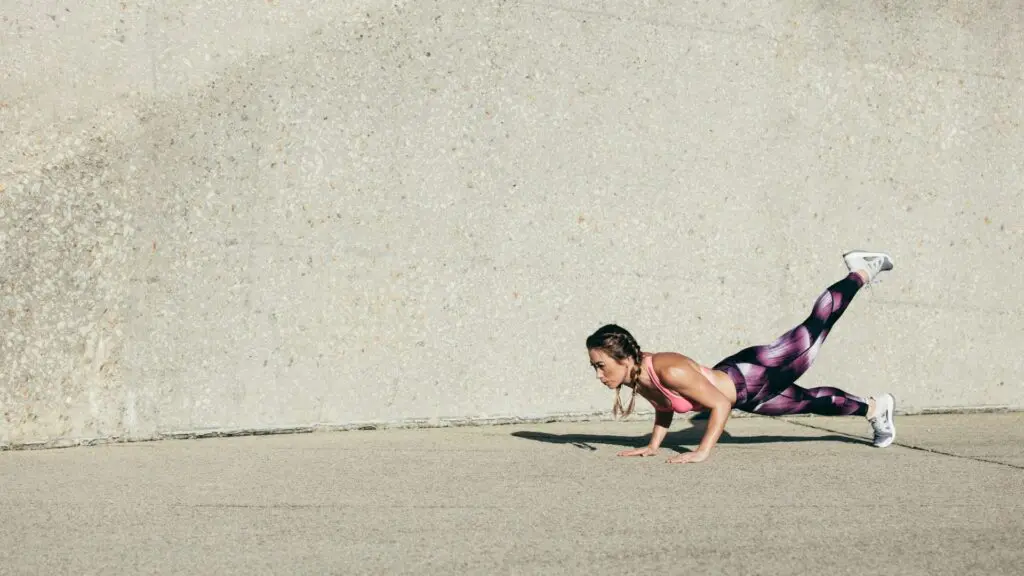
Posture Correction For Back Pain In Under 60 Seconds
If you have lower back pain your posture can make a huge difference, but improving your posture can have wide reaching benefits according to research. Some of these can include preventing health issues such as weakness, pain, respiratory issues and depression & reducing risk of back pain. All this, while improving exercise performance and even contribute to overall health and wellbeing! With something that is so terribly easy to do, and so many simple benefits, why wouldn’t we want to spend a little time improving our posture, and this video and article will help you make a start with just that!

How to line up your posture correctly
Whether you’re standing or sitting, the alignment of the “centres” of mass makes a huge difference. Often the prompt to fix your posture comes from seeing a photo of yourself that you were not aware was being taken. All of a sudden you see your posture from the side, see the tummy pushing forwards, back hunched and your neck sticking out in front. Horrible! It leaves you thinking…
“My goodness, do I always stand like that?!”
Just like so many things when it comes to posture there are some simple steps we can take to make sure things are lined up right for the most effective posture. The best way to think about this is to think about three boxes, these three boxes represent your centers of mass.
- Box 1: Your head
- Box 2: Your rib cage
- Box 3: Your pelvis
You might be wondering about your feet, whether you’re sitting or standing. The 3 boxes mentioned above must be aligned above one another in order to transfer the weight of each box successively through the “connector”, which is the specific section of the spine that runs between two boxes. If you’re sitting the “feet” can act as a “4th box” connected via the legs.
For clarity, the connections are as follows: in between your head and rib cage, the neck or “cervical spine” is the connector. In between your rib cage and your pelvis, the low back, specifically the “lumbar spine” is the connector.
When these centers of mass are stacked on top of one another, everything is operating in maximum efficiency. When they move forwards, backwards, left or right as their “resting position” or “normal posture” we can get into trouble.
Simple exercise to improve your posture in under 60 seconds
This simple exercise to fix your posture can be done from home, the first step is to find the posture, the second is to activate some of the muscles in the right places to hold yourself there, so let’s begin:
Step one: line it up against the wall
You’re going to begin standing with your back to a wall, with your heels within 1 inch of the wall. You’re then going to rest your bum, middle back and head against the wall.
Step two: tighten your core muscles
From here, you’re going to engage the core muscles & pelvic floor muscles. It is important that you do not move your spine here. Many will be tempted to do a “pelvic tuck” but do not do this.
Step three: tighten your back muscles with a chest pop
Imagine that you have a hook attached to your breast bone, that’s pulling you forwards and up at a 45 degree angle. Do not leave the wall but allow your chest to be elevated slightly. As you do this you should feel your shoulders drop slightly and the muscles between your shoulder blades tighten up to connect with the muscles in your low back and core.
Step four: check your neck position
For some, particularly those with rounded shoulders or a rounded upper spine (hyperkyphosis of the thorax), you might find your head now looking up too high. Here you need to do your best to correct your head position by dropping your chin so that you’re looking forwards. If you were wearing glasses the frame from your eye to your ear would be pointing up by about 10-15 degrees compared to the horizontal, but no more than this.
Step five: hold the position
Hold this position with the active work of the muscles described above for 5 to 10 seconds. Then relax and repeat 3 to 5 times. As you can see this is a very quick task you can do all in under 60 seconds so our suggestion would be to do this multiple times a day, and try to maintain the posture even as you leave the wall. Over time it will become less strange, and more natural!

What if you get pain when you stand up straight with good posture
For some, when standing like this, as you move the “boxes” into their position there will be some pain or discomfort, either in the neck or lower back. This is quite normal for those with a bad posture and back pain. This is one of the reasons it can be difficult to recover from back pain. Because the act of re-arranging your spine to the “right posture” is painful. This is often because of severe stiffnesses or high levels of inflammation that make it hard. The problem with this is that it creates another factor that is preventing your back pain from getting worse.
There is however good news. If you’re doing the right work when it comes to rehabilitation for your lower back pain, this will get easier and easier to stand correctly. This posture check therefore becomes a sort of “progress tracker” as you rehab your back, this posture check will become easier and easier. As your spine health improves, you will get less pain when standing correctly. From there, it is important to start to work harder on maintaining good healthy efficient posture.
Building healthy posture for the long term at any age
Especially if you have had back pain or sciatica, it is important that you work to build a stronger posture for the long term. This drill is fantastic for starting to orientate your body in an efficient way. The next step is building strength in the muscles that maintain this posture. When you begin to stand like this, you will find that your muscles tire quickly, they fatigue for two reasons:
Reason 1 is that they are working against your bad habit and your stiffness while being of insufficient strength, so it’s not just a matter of them holding your flexible body in the right place, they’re having to pull parts of your stiff spine and torso against its will, into the “right position”.
Reason 2 is that they have clearly not been used in this way regularly so conditioning is poor. It takes time and effort to improve this and that’s what we’ll be finishing with today!
Simple exercises you can do to help strengthen your posture for the long term
Here are some quick exercises you can do to help build the muscles on the back of your body, commonly referred to as the “posterior chain” which is the series of muscles that runs from the back of your head down to the back of your heel.
Firstly the squat is a great exercise that will work both your lower body but also your back muscles & core too. Next comes the hip hinge, as you improve your mobility and can go lower down into the movement you’ll find this works more of the muscles higher up your back too! For both of these exercises you can add resistance over time to build strength. Finally a nice resisted chest pop can work wonders for the upper back muscles specifically, and you can use resistance bands or cables to make this harder over time. This wouldn’t be complete without a simple chest stretch to help relax the muscles of the front of your rib cage, which are often tight from our daily life in front of computers and smartphones.
Final thoughts on your posture
Although you’ll hear people online saying posture doesn’t matter and doesn’t cause back pain, they’re just doing it to sound provocative, clinging to some minor details that aren’t being expanded on, or the fact that some elite power lifters will lift heavy weight with a rounded lower back. Guard yourself against these sensationalised posts as they don’t tell the whole story – one could say it’s similar to the doctors from the 1900 stating that smoking is good for you.
Commit to making yourself better, because there is literally nothing to lose by doing so, and everything to gain. If you want a little more help with building strength in your good posture especially if you have low back pain, then check out the free masterclass on “fixing low back pain”. It’s an 80 minute live workshop where we show you the exact exercises and how to do them safely if you’ve got a lower back issue or sciatica. And remember, if you need any more help, you can always check out the membership to the Back In Shape Program.

References:
Tattersall, R., Srp, M., & Walshaw, M. (2003). Posture and cystic fibrosis.. Journal of the Royal Society of Medicine, 96 Suppl 43, 18-22 .
Kanase, R., Kumavat, A., Sinalkar, R., & Somani, S. (2021). Pose Estimation and Correcting Exercise Posture. ITM Web of Conferences. https://doi.org/10.1051/itmconf/20214003031.
Patterson, E., Brown, E., Ruminski, C., & Miller, T. (2021). Electronics: The Enemy of Posture and How to Protect Yourself. , 9. https://doi.org/10.3389/frym.2021.553496.
Chaudhari, R. (2020). Understanding significance of sitting posture as a etiological factor causing low back pain. International Journal of Research, 4. https://doi.org/10.52482/AYURLINE.V4I06.486.
Arya, V., Makattil, N., Sasikumar, V., Anuparvathi, V., & Khandare, S. (2023). Know Your Posture : Real Time Posture Detection and Correction with Yoga and Exercise Recommendations.. 2023 International Conference on Signal Processing, Computation, Electronics, Power and Telecommunication (IConSCEPT), 1-4. https://doi.org/10.1109/IConSCEPT57958.2023.10170654.Huang, C., & Kelly, J. (2022). Toward Better Posture: A Wearable Back Posture Alerting Device. Journal of Student Research. https://doi.org/10.47611/jsrhs.v11i2.2530.









Thank you love this video, I was actually thinking just the other day I need to be feel what is correct and how do I do that! So thank you x
Thanks for the kind comment Katherine! Glad it was helpful!